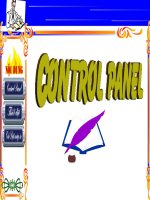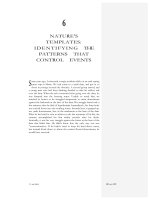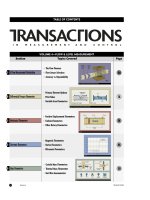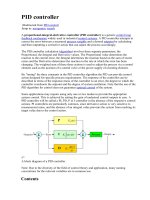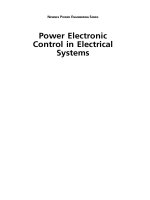ELECTRONIC CONTROL UNIT(COMPUTER)
Bạn đang xem bản rút gọn của tài liệu. Xem và tải ngay bản đầy đủ của tài liệu tại đây (396.38 KB, 9 trang )
University of Technical Education
Ho Chi Minh City
ELECTRONIC CONTROL UNIT
(COMPUTER)
Le Thanh Phuc
Faculty of Automotive Engineering
Email:
1
Introduction
A computer is an electronic device that
stores and processes data.
It is also capable of controlling other devices.
2
Introduction
The computer contains a crystal oscillator or
clock circuit that delivers a constant time
pulse.
3
Signal Conditioning and Conversion
Some input sensors produce a very lowvoltage signal of less than 1 volt.
This signal also has an extremely lowcurrent flow.
Therefore, this type of signal must be
amplified, or increased, before it is sent to
the microprocessor.
4
Signal Conditioning and Conversion
5
Signal Conditioning and Conversion
The digital computer cannot accept analog
signals from the sensors and requires an
input interface to convert the analog signal to
digital.
The analog to digital (A/D) converter
continually scans the analog input signals at
regular intervals.
For example, if the A/D converter scans the
TPS signal and finds the signal at 5 volts, the
A/D converter assigns a numeric value to this
specific voltage.
Then the A/D converter changes this
6
numeric value to a binary code
Signal Conditioning and Conversion
7
Microprocessor
The microprocessor (μP) is the brain of
the computer.
The μP brings information into and out of
the computer’s memory.
The registers used include the
accumulator, the data counter, the program
counter, and the instruction register.
The control unit implements the
instructions located in the instruction
register.
The arithmetic logic unit (ALU) performs
the arithmetic and logic functions.
8
Microprocessor
9
